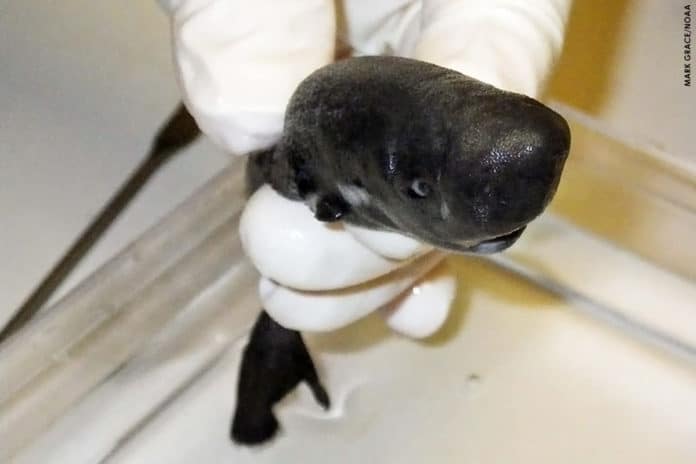Until now, only two pocket sharks have ever been reported to be found. Both sharks are of different species and from different oceans too. What’s interesting is, only one pocket shark has ever been reported from the Gulf of Mexico in February 2010 in the eastern Gulf of Mexico by the NOAA ship Pisces, during a mission to study sperm whale feeding.
Recently, a team of scientists, including two from Tulane University have discovered following careful study of a pocket shark that made international headlines in 2015 after it was brought to the Royal D. Suttkus Fish Collection at the Tulane University Biodiversity Research Institute.
Henry Bart, director of the Tulane Biodiversity Research Institute said, “The fact that only one pocket shark has ever been reported from the Gulf of Mexico, and that it is a new species, underscores how little we know about the Gulf – especially its deeper waters – and how many additional new species from these waters await discovery.”
“There were notable differences between the original Pacific Ocean specimen and the newer specimen from the Gulf of Mexico. Those differences include fewer vertebrae and numerous light-producing photophores that cover much of the body. The two species both have two small pockets that produce luminous fluid (one on each side near the gills).”
The pocket shark was captured on February 2010 in the eastern Gulf of Mexico by the NOAA transport Pisces, during a mission to contemplate sperm whale sustaining. A lot incredibly, scientists found the shark in 2013 while inspecting specimens that were collected during the NOAA survey. They then archived the specimen in its Fish Collection. After that, analysts embraced an examination to figure out what species it was.
Distinguishing the shark included examining and photographing external features of the specimen with a dissecting microscope, concentrating radiographic (x-ray) pictures and high-resolution CT scans. The most advanced pictures of internal features of the shark were created at the European Synchrotron Radiation Facility (ESRF) in Grenoble, France, which uses the most exceptional wellspring of synchrotron-generated light in the world to deliver x-rays 100 billion times more brighter than the x-rays used in hospitals.
Bart said the partnership between Tulane and NOAA was instrumental to the work that leads to the discovery and identification of the American Pocket Shark. The Tulane-NOAA Fisheries partnership is continuing and may lead to additional discoveries in the future.”
The details of the new species are described in an article published in the animal taxonomy journal Zootaxa.
